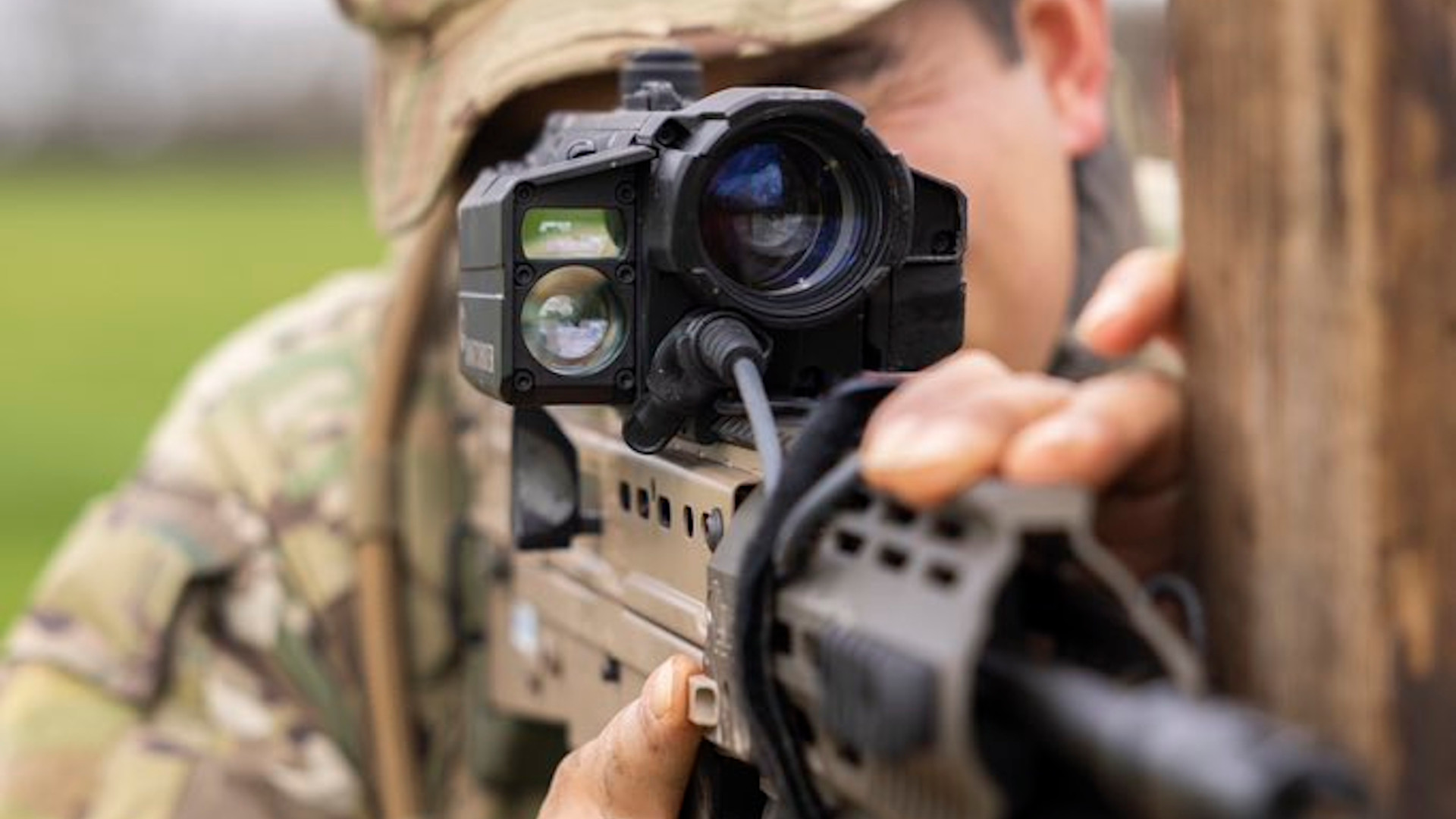The “Paras” of the British Army’s 16th Air Assault Brigade Combat Team now have Israeli-made computerized sighting systems for their L85A3 rifles. The main purpose of the SMASH X4 sights from Smart Shooter is to give the Paras a new way to help tackle enemy drones, a now long-standing threat that has come into sharp relief in the ongoing conflict in Ukraine.
The 16th Air Assault Brigade Combat Team, the British Army’s highest readiness unit, shared pictures of personnel training with the new SMASH X4 sights on social media. The U.K. Ministry of Defense announced last year that it awarded a contract valued at £4.6 million (just over $5.8 million at the rate of conversion at the time of writing) for the purchase of SMASH-series sights via Viking Arms Limited. British authorities said at that time that they were placing an initial order for 225 sights for very high readiness formations, but that the full deal had provisions for additional purchases for the British Army, as well as elements of the Royal Navy and Royal Air Force.
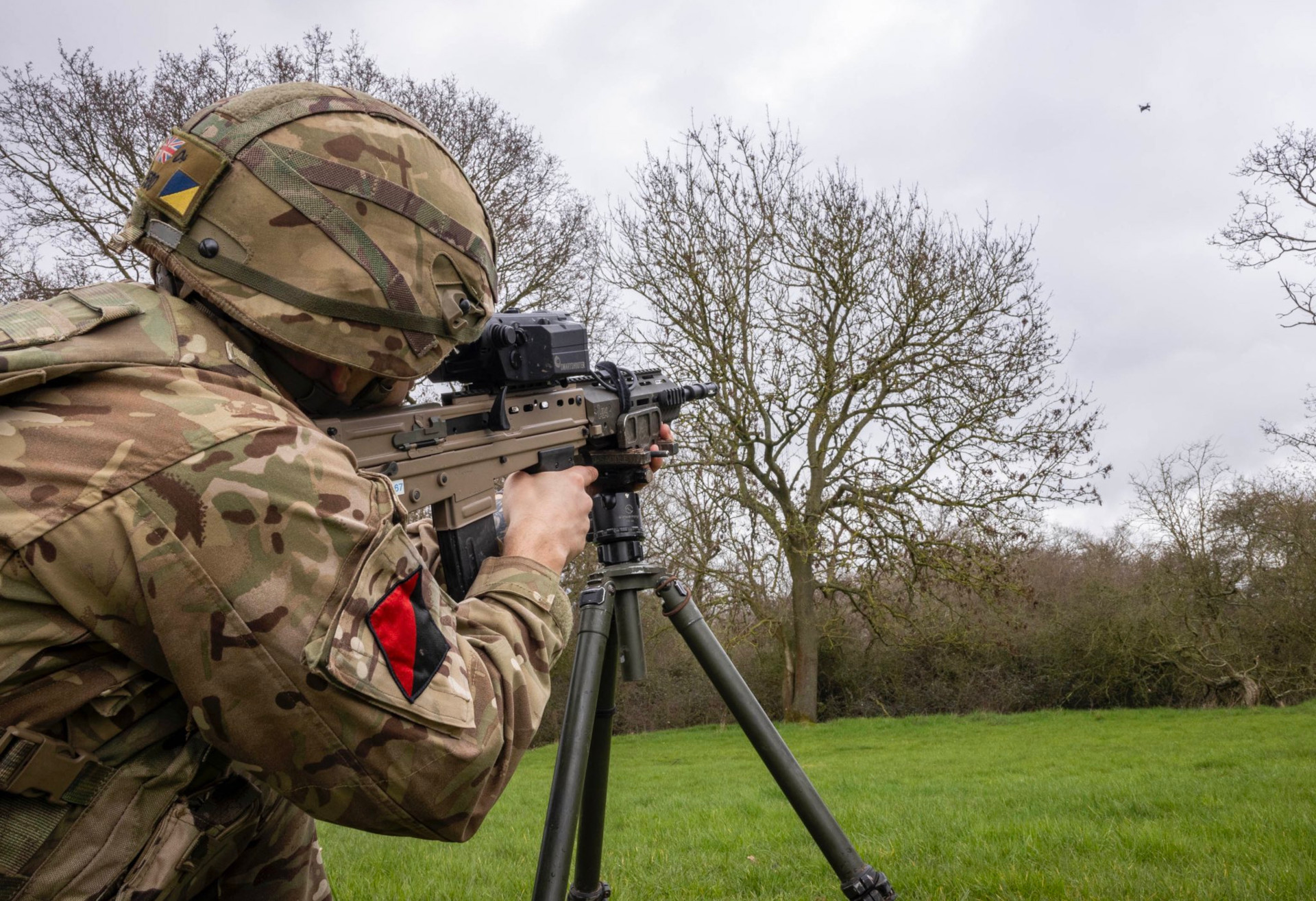
It is unclear whether the British Army plans to buy other versions of the SMASH sight, or if it has already, beyond the X4 model. The service had previously released pictures showing members of the 2nd Battalion, The Royal Yorkshire Regiment (2 Yorks) evaluating L85A3 rifles with X4 and SMASH 2000/3000-types in 2022. 2 Yorks is the British Army’s experimentation battalion.
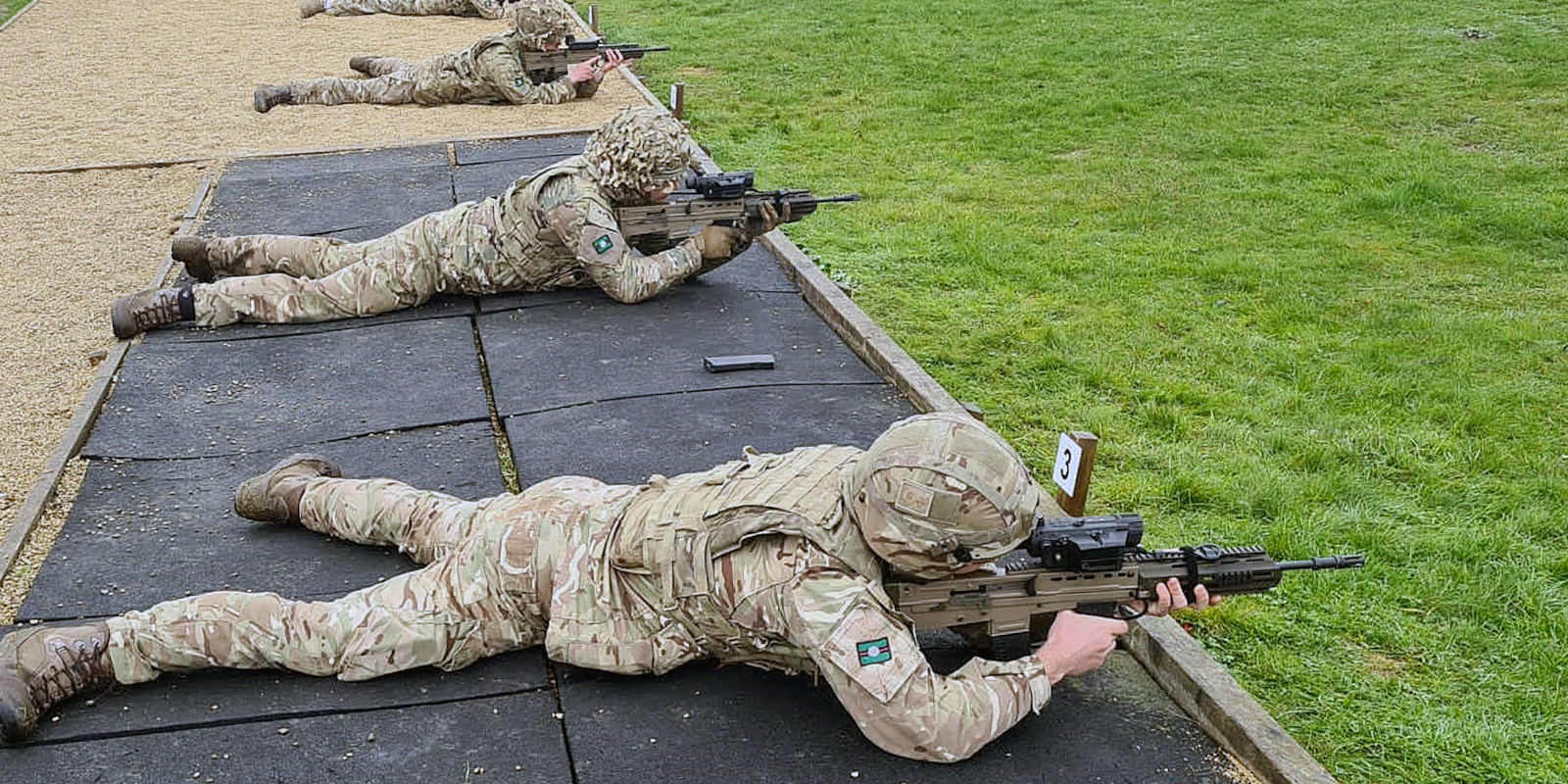
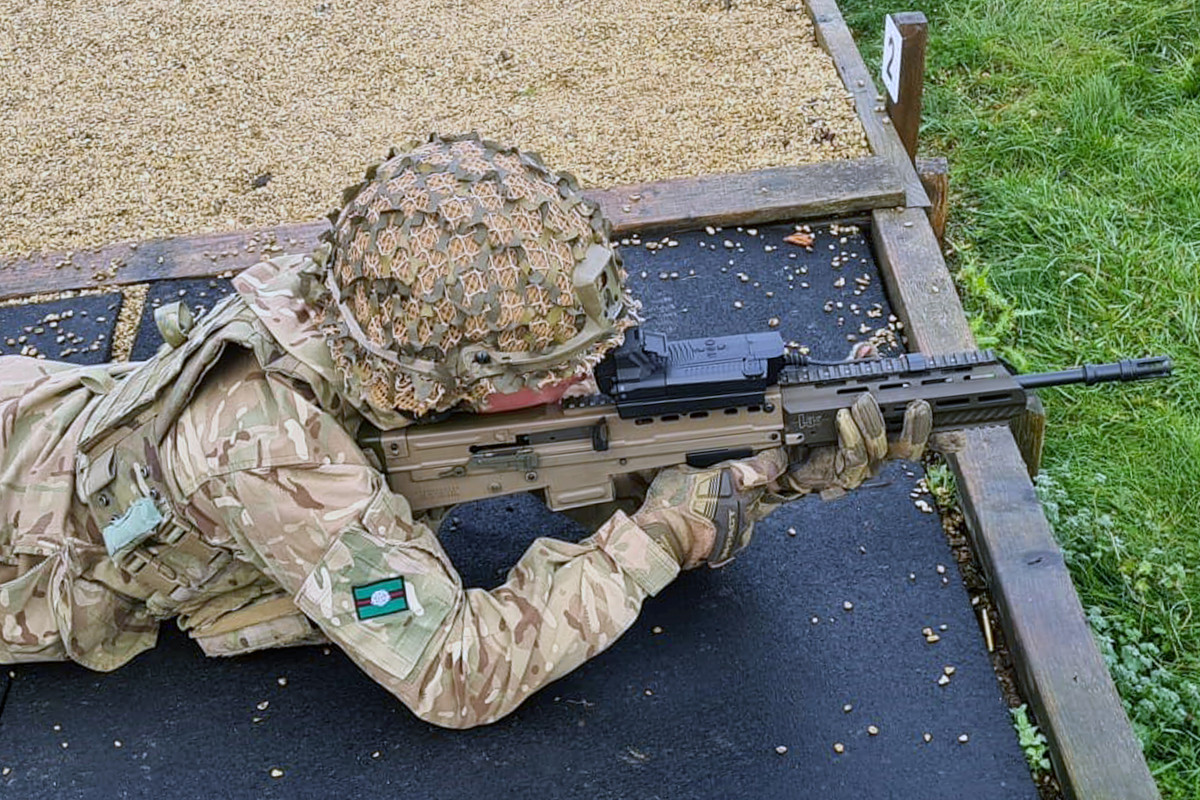
The main difference between the SMASH X4 (originally branded the SMASH 4M) and earlier 2000/3000 versions is that the former has a main optic with 4x magnification. Previous SMASH sight types, which Smart Shooter continues to offer, have non-magnifying optics.

Otherwise, the two sight types function in roughly the same manner. SMASH-series sights use Smart Shoorter’s proprietary targeting algorithms to spot and lock on to targets. It then computes an optimal point for the shooter to aim at, even if the threat is moving or during engagements at night. The company also says rifles with their sights can be configured to only allow the trigger to be pulled when the sight is aligned with the aim point, a feature the British Army says is found on its SMASH X4-equipped L85A3s.
The video below offers an overview of how the core technology behind the SMASH family of sights works.

The sights themselves are designed to be platform agnostic and have been seen in the past fitted on other rifles, including M4/M16 types (or derivatives thereof) and Israeli-made IWI Tavors. Smart Shooter also offers a remote-controlled turret to go along with rifles equipped with SMASH sights, which can be emplaced on the ground or fitted on vehicles.

Smart Shooter originally developed the SMASH family of sights to help improve shooter accuracy, especially in high-stress situations or instances where individuals are heavily fatigued. However, the value of these sights as counter-drone tools has long been obvious. In this role, the SMASH X4’s magnified optic offers additional benefits when it comes to being able to spot and engage what could easily be relatively small threats moving in erratic ways.
SMASH sights can still be used to help shooters engage non-drone threats more accurately. “We’ve got medics and signallers on this who, because of their role, don’t use their rifles as much as infantry, and they are shooting with an accuracy that they have never achieved before,” a post from the 16th Air Assault Brigade Combat Team’s official account on X reads.
SMASH-series sights first entered service with the Israel Defense Forces (IDF) in 2018. They then emerged in the hands of U.S. special operations forces in Syria in 2020, with an emphasis on their counter-drone capabilities. The U.S. Army and U.S. Marine Corps have also since acquired SMASH sights for use by conventional units.
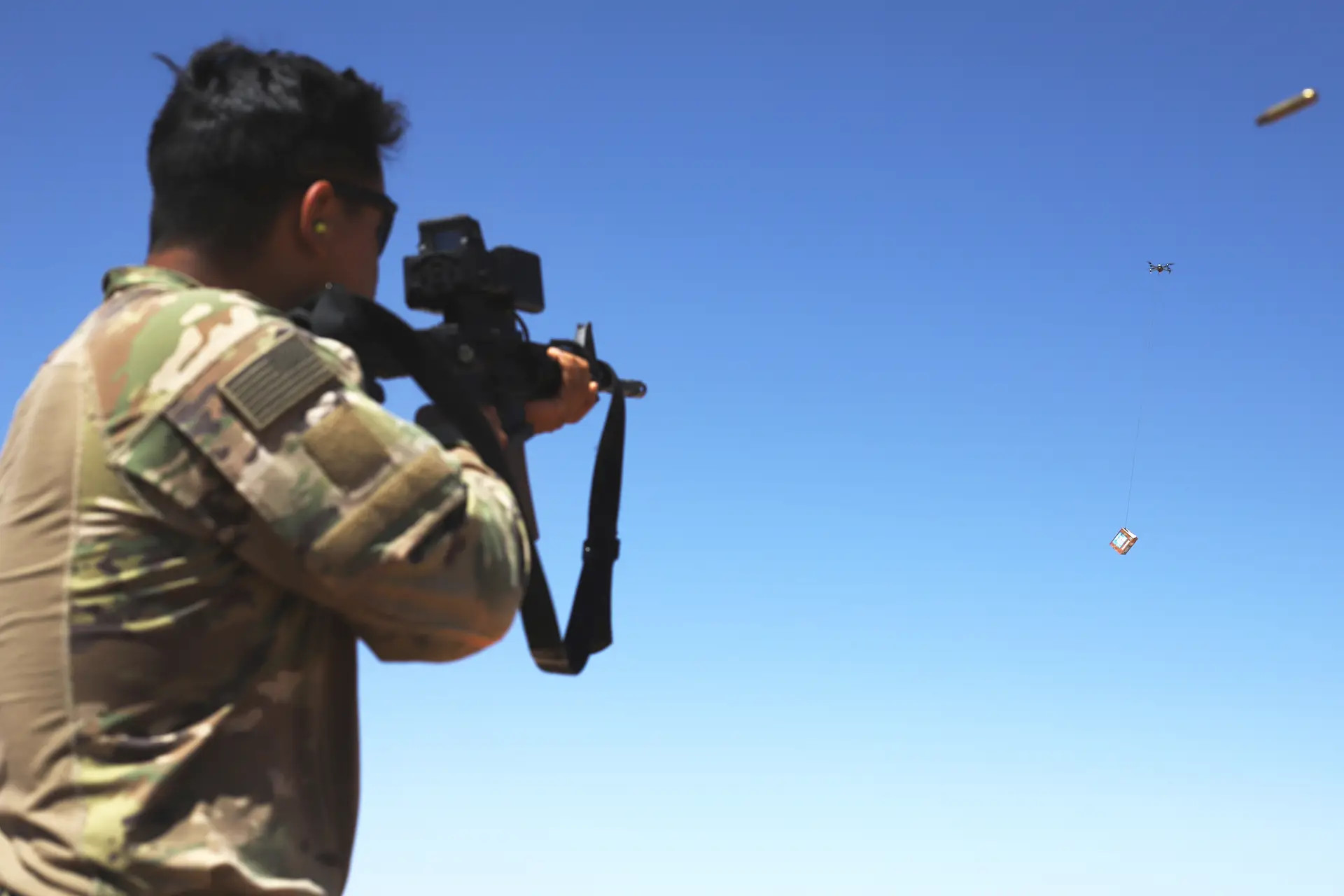
The threats that drones, including weaponized commercial types, pose on and off traditional battlefields are not new, as The War Zone has highlighted on many occasions in the past. The low barrier to entry means lower-end drone capabilities, especially, are steadily proliferating globally, even among non-state actors. However, their ubiquity on both sides of the conflict in Ukraine has been particularly visible.
In Ukraine, small commercial drones armed with warheads that are designed to crash into their targets and detonate, as well as ones configured to release small improvised munitions, have proven to be a particular menace. These kinds of drones have sometimes themselves been capable of destroying or at least seriously damaging tanks and armored vehicles, as well as engaging unarmored targets and even individual personnel. This reality can be clearly seen in the videos below.
Many Armed forces around the world, including in the United States, have taken notice and are now pushing to expand and accelerate various counter-drone efforts.
Addressing the threat posed by drones, including high-end types as well as armed commercial designs, demands more than just something like SMASH X4. The 16th Air Assault Brigade Combat Team says its acquisition of these sights is part of a broader, multi-layered effort that also includes a new emphasis on “camouflage and dispersion” that is “key to making troops and kit harder for drones to find on the battlefield.”
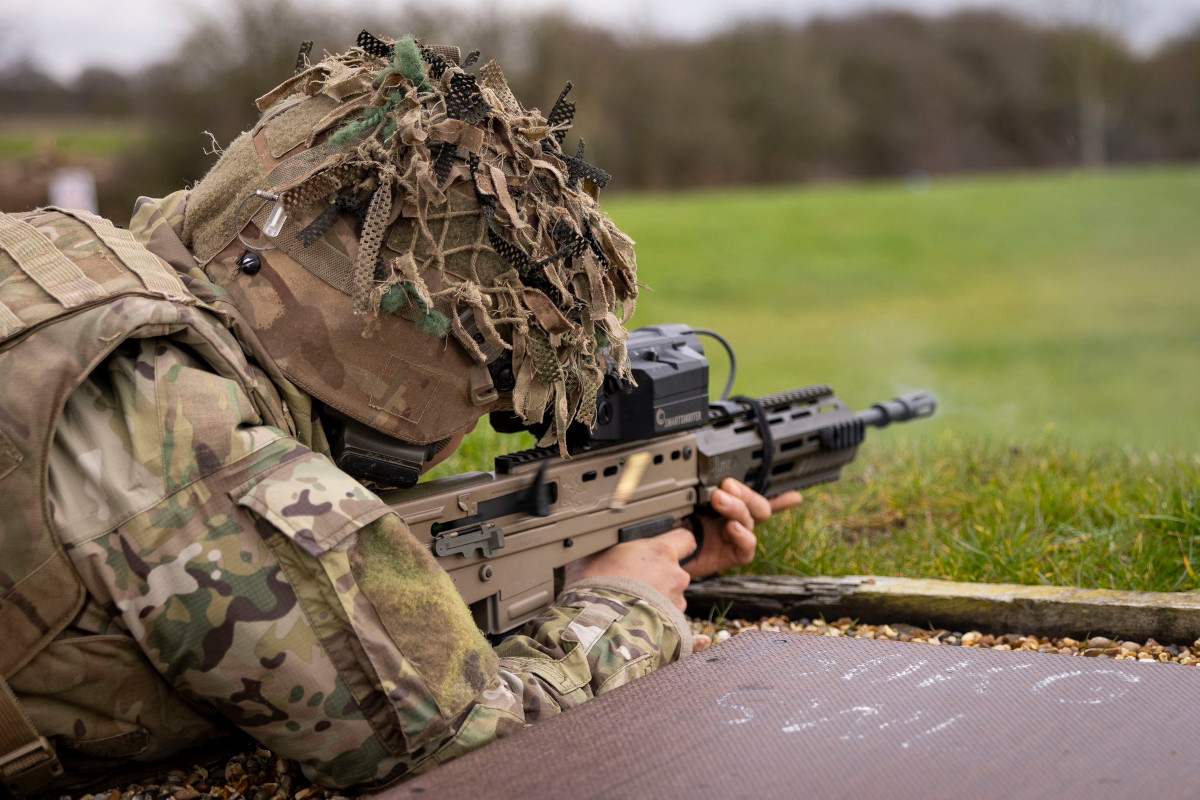
“The importance of uncrewed aerial vehicles on the modern battlefield is undeniable,” James Cartlidge, U.K. Minister for Defense Procurement, said last year when the contract for the SMASH sights was first announced. “Alongside procuring, developing, and deploying this technology in a range of different ways, we must also be proactive in ensuring our Armed Forces can protect against their use by adversaries.”
Smart Shooter’s computerized sights will give British forces, starting with the 16th Air Assault Brigade Combat Team, an additional tool for tackling the rising drone threat.
Contact the author: joe@twz.com
